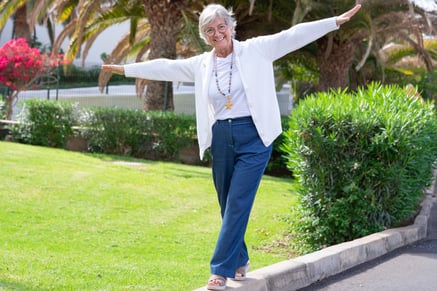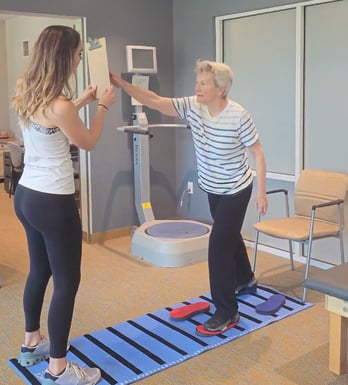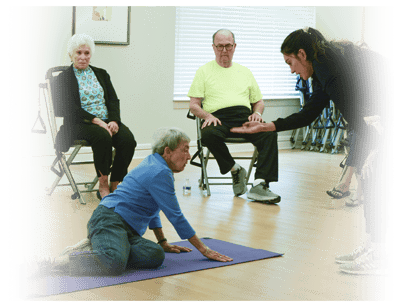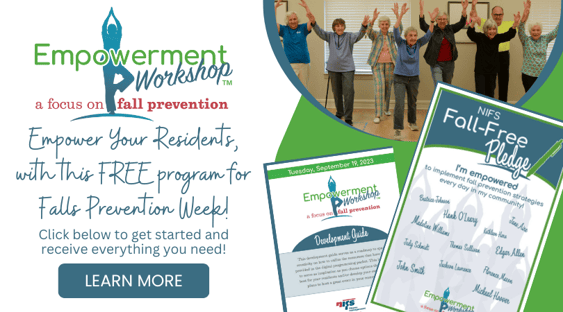 Picture this: You're gliding effortlessly across a small trampoline, the rhythmic bouncing sending a gentle wave of energy through your body. This isn't just some childhood fantasy; it's rebounding, a low-impact exercise gaining popularity among senior citizens for its myriad health benefits.
Picture this: You're gliding effortlessly across a small trampoline, the rhythmic bouncing sending a gentle wave of energy through your body. This isn't just some childhood fantasy; it's rebounding, a low-impact exercise gaining popularity among senior citizens for its myriad health benefits.
Unlike traditional exercises that can strain joints and muscles, rebounding is surprisingly gentle. The trampoline's bouncy surface absorbs the impact, allowing you to engage in a full-body workout without putting undue stress on your body.
Why Rebounding is a Perfect Fit for Seniors
As we age, our bodies become more susceptible to the effects of inactivity. Osteoporosis, weakened muscles, and diminished balance are just a few of the challenges older adults face. Rebounding tackles these issues head-on, offering a safe and effective way to improve overall health and fitness.
-
Cardiovascular Health Boost: Rebounding gets your heart pumping, increasing blood flow and oxygen delivery to your vital organs. This can help reduce the risk of heart disease, stroke, and other cardiovascular problems.
-
Bone Density Enhancement: The weight-bearing nature of rebounding stimulates bone growth, combating osteoporosis, a common concern among seniors.
-
Balance and Coordination Improvement: Rebounding challenges your vestibular system, which controls balance. This can help prevent falls, a major risk factor for older adults.
-
Stress Reduction and Anxiety Relief: Rebounding releases endorphins, those feel-good hormones that elevate mood and reduce stress. This can also improve sleep quality, a crucial factor for overall well-being.
-
Muscle Strengthening and Endurance: Rebounding engages all major muscle groups, leading to increased strength and endurance. This improves overall fitness and mobility, making everyday tasks easier.
-
Weight Management: Rebounding burns calories, aiding in weight loss or maintenance. This is particularly beneficial for seniors who may be struggling with weight-related health issues.
-
Mental Function Enhancement: Rebounding increases blood flow to the brain, boosting cognitive function and improving memory, concentration, and mood.
Facts About the Safe Use of a Rebounder
Rebounding is a safe form of exercise for most people, including senior citizens. However, it is important to start slowly and gradually increase the intensity of your workouts. It is also important to wear comfortable shoes and clothing that allow freedom of movement. If you have any health concerns, talk to your doctor before starting a rebounding program.
Here are some additional tips for safely using a rebounder:
- Use a rebounder with a sturdy frame and a padded surface.
- Place the rebounder on a level surface in a well-lit area.
- Hold onto the handlebars for support when you are first getting started.
- Land gently on the balls of your feet.
- Listen to your body and stop if you feel pain.
Embrace the Bounce: Elevate Your Senior Fitness
Rebounding is more than just exercise; it's a gateway to a healthier, happier, and more fulfilling life. Seniors who embrace rebounding often experience a newfound sense of vitality, relaxation, and mental clarity.
So, what are you waiting for? Grab a rebounder, put on your favorite music, and let's bounce our way to better health!


.jpg?width=477&height=318&name=GettyImages-1143018176%20(1).jpg) It isn’t a secret that as a person ages, there is an increased risk of falling. While there are a few different reasons this risk can increase, we will focus on what impacts a person’s ability to
It isn’t a secret that as a person ages, there is an increased risk of falling. While there are a few different reasons this risk can increase, we will focus on what impacts a person’s ability to 
 What is great about practicing balance is there are multiple ways to do so without breaking the bank. In
What is great about practicing balance is there are multiple ways to do so without breaking the bank. In 
 What is great about practicing balance is that there are multiple ways to do it including the utilization of various machines. Within senior living, evaluating equipment options can be a helpful starting point to developing a comprehensive fall prevention program for residents. In this two-part blog series, we’ll be covering investment pieces to incorporate in your fitness center’s fall prevention programming as well as more budget-friendly options if you are looking for more cost-effective options to give your
What is great about practicing balance is that there are multiple ways to do it including the utilization of various machines. Within senior living, evaluating equipment options can be a helpful starting point to developing a comprehensive fall prevention program for residents. In this two-part blog series, we’ll be covering investment pieces to incorporate in your fitness center’s fall prevention programming as well as more budget-friendly options if you are looking for more cost-effective options to give your  Fall prevention programs and services have been a cornerstone of
Fall prevention programs and services have been a cornerstone of 